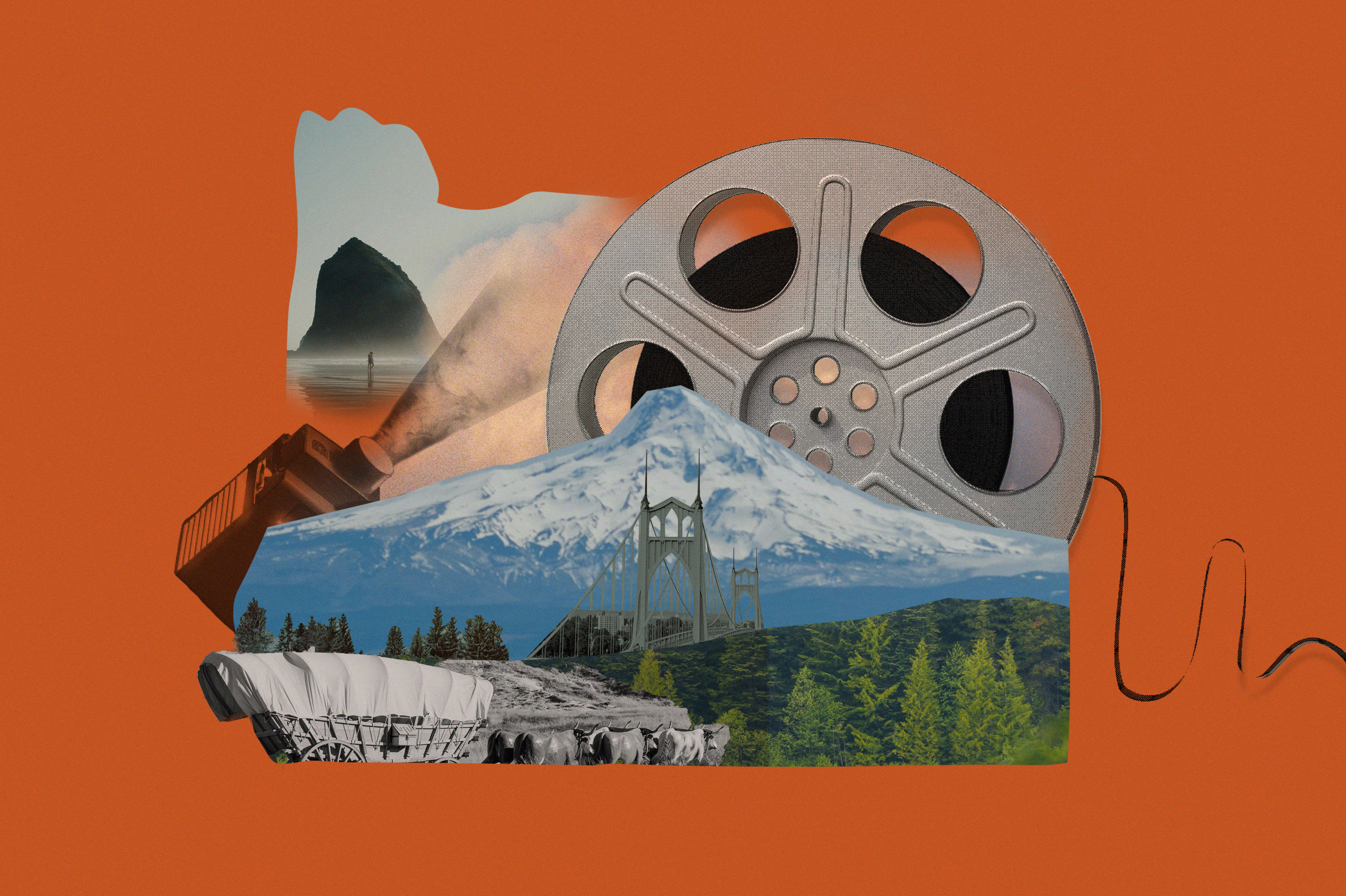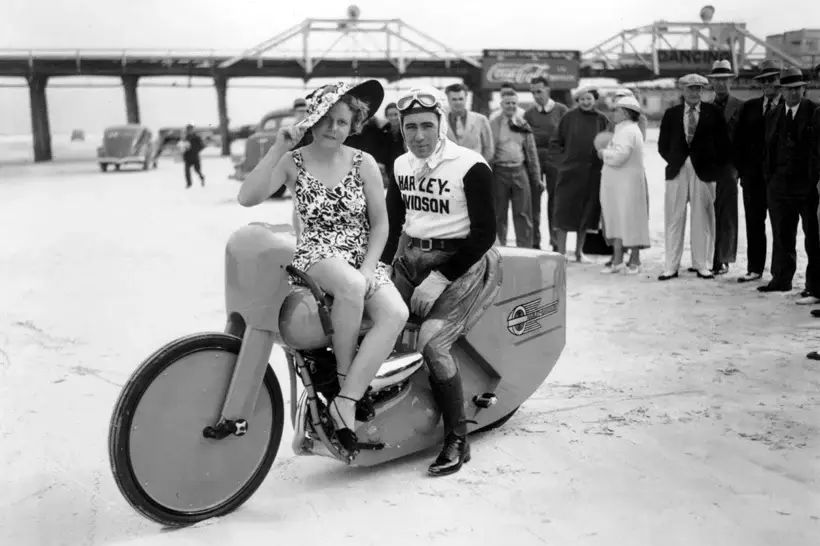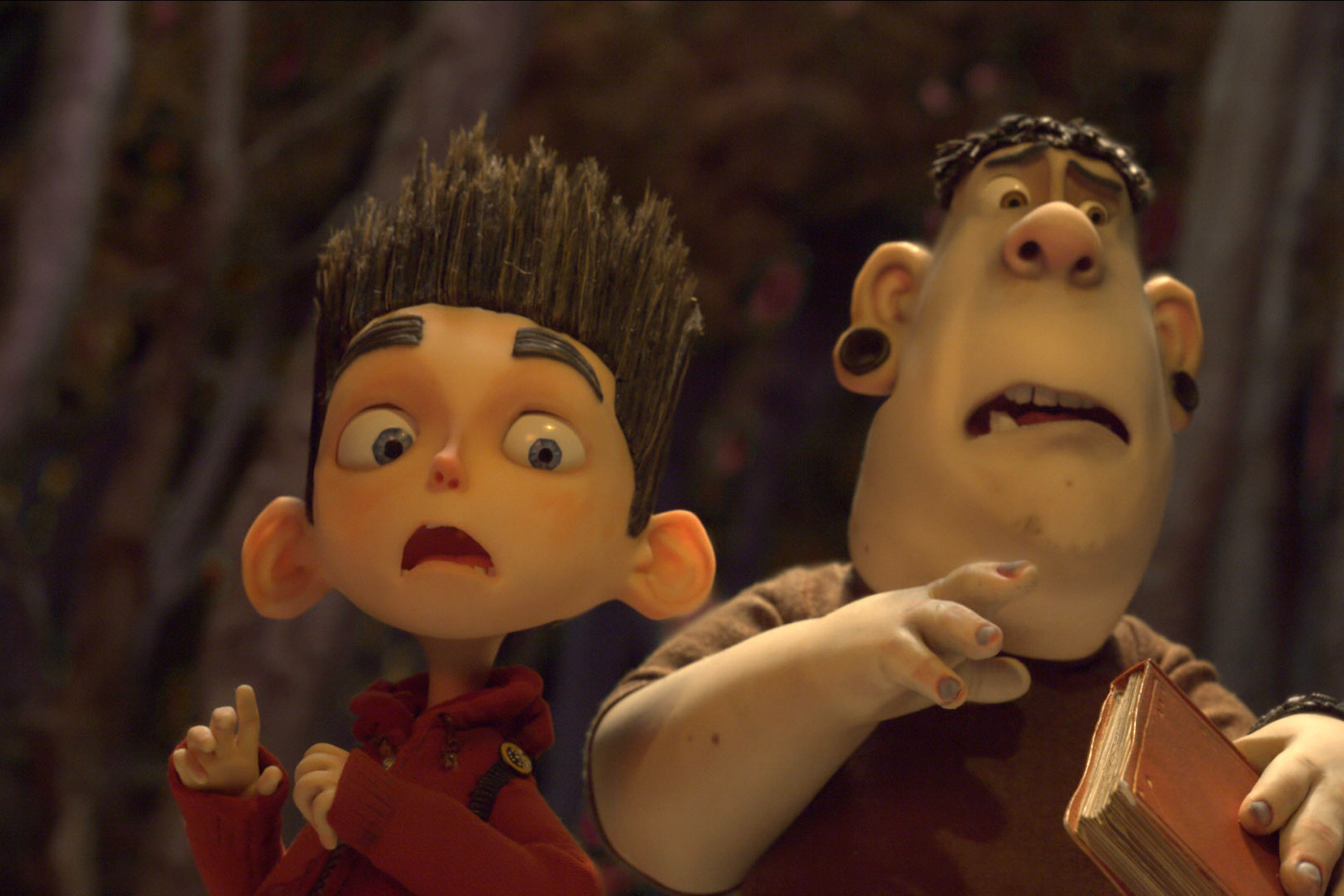Baby Fever Is a Monstrously Good Portland-Made Horror Flick
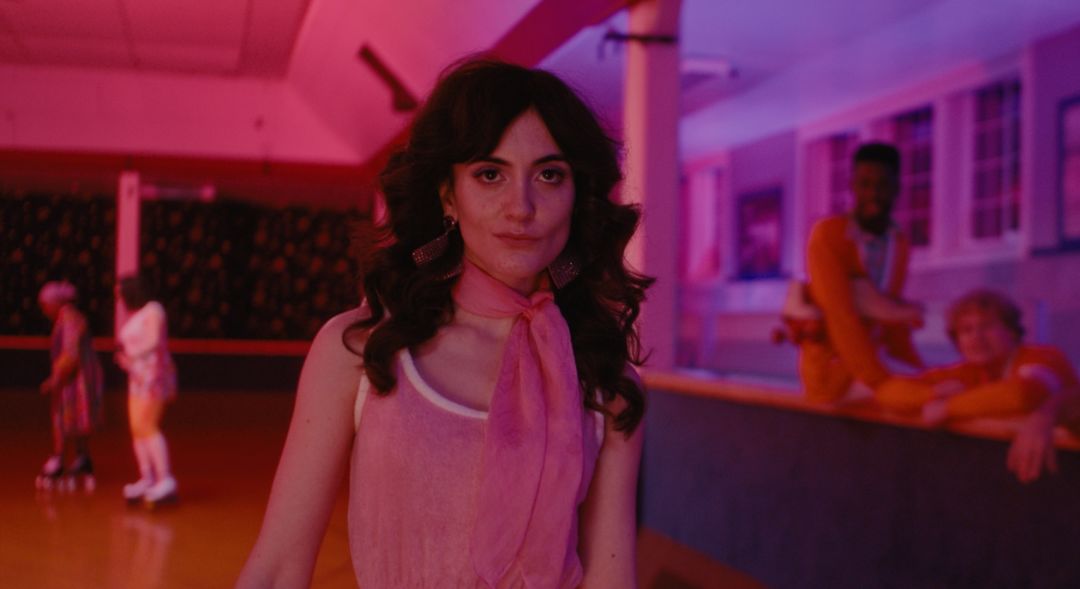
Helena Berens as Donna Hartman in Baby Fever
If high school is hell, what does that make teen pregnancy? That's the question that kick-starts Baby Fever, the latest short film from Portland production company Monstrous Femme. Set in 1972 and colored like a cross between Boogie Nights and Totally Spies!, Baby Fever tells the story of shoo-in prom queen Donna Hartman's fall from grace after star quarterback Trip Baker (Louis Llewellyn) impregnates her with an alien life form.
For a 30 minute short, Baby Fever is remarkably well-realized: it looks about thrice as expensive as it is, and while it wears its influences proudly—Carrie to Argento to Scooby-Doo—the final product transcends pure pastiche. The film was a clear standout at the Portland Horror Film Festival, where it premiered in June, and since then, it has begun a robust life on the festival circuit. We caught up with writer/director Hannah May Cumming to discuss ’70s fashion, exploding heads, and what it was like to premiere her pre-Roe nightmare a week after the Supreme Court overturned that landmark decision. Our conversation has been condensed and edited for clarity.
PORTLAND MONTHLY: What was the first image or inkling that came to you in the process of creating this film?
HANNAH MAY CUMMING: I’m a vintage collector. My mom and I collect vintage prom dresses and have since high school, and my cofounder of Monstrous Femme Films, she also does the costume design, and we’re both huge vintage fashion nerds. We wanted to write something so we could do a ’70s prom, but it’s really hard to differentiate from Carrie, which is like the prom horror movie. So I was wracking my brain for a way to do a prom in the ’70s that didn’t feel like Carrie.
I got to thinking about when I was a teenager, and what teenage girls are the most afraid of; I would say teen pregnancy is pretty high on everybody's list. There are just so many factors that go into it: telling your parents, telling the father, everyone at school finding out, what happens to your college plans. It's a very real fear. I started with that, and then asked how we could take the fantastical elements of the horror genre to tell a parable story about the anxieties around teen pregnancy. I was thinking about what growing a human inside of you feels like and does to you, and that is where the parasite metaphor came from. That’s where we got the worms.
Can you speak about the design of those guys? I assume there was an internal conversation about wanting the effects to be practical, so tell me about that choice and how you went about executing it.
Something that I think makes Baby Fever, and our production company, really special is that we're all best friends and most of us are roommates. I live with Emma, who produced the film and did the costume design, and I also live with my cowriter and another producer, Alex Hartwig. And my partner, Carlo Mery—we've been together since high school, we actually went to prom together—he did the special effects. We have a basement in our house and that's his special effects studio. He spent two years just researching the technology, and our budget was really small, so it was kind of taking what these bigger budget movies do and then learning to do that with cheaper materials.
You mentioned the inevitable Carrie echoes, but what were your other aesthetic inspirations?
I have a little sticky note here because I knew I’d forget, since there are so many. The films that we were pulling from were Carrie—the 1976 Carrie, obviously—but not too much. Heathers for the tone, the dark comedy.
There’s a little bit of Winona Ryder in the lead’s face, too.
I’m glad you saw that as well, because that’s how I felt. Prom Night 2: Hello Mary Lou from 1987. It’s one of those movies where they made it, it was originally called The Haunting of Hamilton High, and then they were like, “Let’s market it as the Prom Night sequel.”
Troll 2 vibes.
Yeah, exactly. That’s probably the biggest influence. There are a lot of Prom Night 2 easter eggs in our film. I think it’s just me begging them to let me make Prom Night 5. Also David Cronenberg’s The Brood for the whole sac situation. Rosemary’s Baby. Brain Damage by Frank Henenlotter from 1988—another parasite movie, it’s kind of a parable for addiction, and there’s a practical worm puppet who sings. You gotta see it, it’s bonkers. Mean Girls, because we wanted it to feel like a chick flick. Visually, Emma Cogan was very inspired by Brady Bunch and the live-action Scooby-Doo.
The costumes are really striking. I’m sure you pulled from your personal collections, but were there other major places you sourced from?
Yeah, we borrowed from a lot of local vendors: Hollywood Vintage, Kitschy Bitch Vintage, Raintown Vintage Collective in Astoria. Most of it was local, but some vintage vendors sent us stuff, and then we did use a lot of my personal collection, a lot of Emma’s personal collection, and my mom’s.
What was the most challenging sequence to pull off?
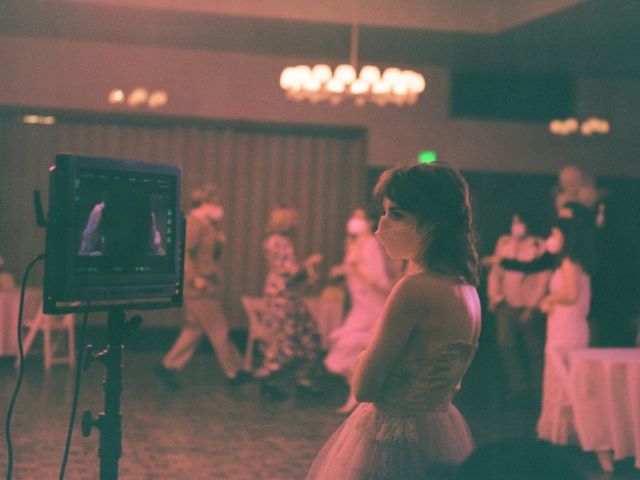
Hannah May Cumming filming Baby Fever's prom-set climax
Image: Allison Barr
I would say the head explosion, our one Carrie moment. That was really stressful. We tested it, but the distance was slightly different every time, and I'm like, “This is how accidents happen.” But we had no choice, and we only had one copy of the dress, so we were like, “We just gotta do it.” You could literally feel the energy and the tension in the room. There’s a behind of the scenes video of when they fire it, and it's just perfect. The blood splatter is perfect. Georgia Thomas, her performance is perfect. And I just start sobbing.
And then our opening roller rink shot, we only had a half day to shoot at Oaks Park. And that shot is really complicated because it's a oner, and the actors only learned how to roller skate two months before. So they were roller skating as newbie roller skaters, also delivering lines, hitting these different cues and these different marks, and then we had no time to do the vomit shot [over the opening credits].
On the vomit note... Obviously, the film is unsparing by design. It's a horror movie. But you get two vomit shots in there—the big goofy one at the start, plus another one from the inside of a toilet—and that feels intentional. It's this exaggerated side effect of real pregnancy.
It’s funny. It’s a horror movie, it’s got a lot of gross elements, but the part that people react to most is the vomit in the toilet. It just kind of shows what humans are desensitized to seeing and what normal bodily functions they still cannot handle.
But yeah, the goofy one was challenging. It's partially VFX, because the practical effect didn't work. The pump didn’t line up with her mouth and we only had one shot to do it. It was 12:55, and they opened the doors at 1 p.m., and the entire city of Portland decided to go roller skating that day. As they start flooding in, we're running out with this pool full of blood slushee vomit.
But we had great a VFX artist who helped do a hybrid VFX/practical thing, and I ended up thinking it was better than it would have looked if it was just practical. I’m a huge believer in practical effects, but sometimes when the two are used together, you can get a really incredible result. But that and the moment when the worm wiggles in the jar at the beginning are the only VFX in the movie. Everything else is practical.
You premiered at the Portland Horror Film Festival, barely a week after the Supreme Court overturned Roe v. Wade. Talk about the experience of sitting in the theater and watching this movie with that new, sudden, extraordinarily pertinent context.
Thank you for asking that question. I was terrified. I was truly terrified. I mean, when we wrote this, we were processing our fears and anxieties about the future of reproductive rights, and it was three years ago. It was during the Trump presidency, it was after the Supreme Court had been taken over by the Republican party, and it was definitely on our minds, but we had no idea it would become so relevant when we finished the movie. And I think we really took a risk with that particular scene [of a self-administered abortion]. I think that horror is a really amazing way to tell those hard stories, but you never really see abortion in cinema. Before we made it, I had never seen it depicted on film before. Yellowjackets did an abortion scene, but I only saw that after.
Part of it was like, how do you even do these? It’s not online. If you try to look it up, you won’t find it. There was a lot of research: How do we do this scene right? How do we not shy away from the realities of being a woman or a person with a uterus in this country, and the dangers of restricting access to abortion?
I was terrified that the scene would hit too hard for people. I know the intention behind it, but it was just such a fresh, traumatic thing. So I sat in the back, and I was gripping my producer’s arms, terrified the whole time watching the reactions. During that scene, I mean, you were there: the theater was just quiet. You could hear a pin drop. And there’s a moment right after where you see the worm, and it becomes a silly, campy horror movie again, and I knew that if people laughed when that happened, I was in the clear. And they did. I think they needed those laughs. I think they weren’t expecting to be confronted with the reality of our new world, but I’m glad that the movie makes you take a hard look at what we’re living in, but also gives you a chance to laugh and forget about it and still have a good time.
Have you gotten any feedback about that scene?
I have not gotten negative feedback yet. I’m a person who—I don’t believe in censorship. I do believe in handling sensitive subject matter tastefully, with good intentions, from the right perspective, with research involved, but I do think it’s important to take those risks and make provocative art and make art that makes people upset, uncomfortable, angry, happy, sad. You want to evoke all those different emotions from your work. That’s art, I think. So I'm waiting. I’m ready for criticism about that scene. I was ready for pro-life walkouts at the Portland Horror Film Festival, but that didn’t happen.
Your last film with this production company, Camp Calypso, was also a ’70s horror movie. Talk about what draws you to that aesthetic mold, and why Monstrous Femme explicitly makes horror films.
I’ve loved horror since I was a kid. I grew up on Goosebumps and Are You Afraid of the Dark? and all of that gateway horror. I've made horror stuff since I was in high school, since I was younger than that, so I always knew I wanted to make horror movies. But I also want to make a difference. I want to say something with my art. And I feel like horror has touched difficult sociopolitical subjects long before any other genre of film dared to, because they can say it without saying it. Night of the Living Dead, for example—horror has always been political, since the beginning of the genre. I think we're kind of reclaiming it right now as women and as queer people, because it's always been queer, and it's always been femme-centric, but I think that we haven't been treated so well by the genre. So I think that we're taking those subgenres of horror that we really love, but do take issue with, and making them our own.
With the summer camp one we made, those movies were very misogynistic. And this time, we wanted to flip it on its head and exploit the the male characters. And then before that, we did giallo, and I love giallo, but giallo has not always been kind to women. So that one's very sex positive, it's about sex workers, and we wanted to have a progressive depiction of sex work in that film.
As for the ’70s, that's just my favorite genre of horror. Same for Emma. We love ’70s horror and ’70s fashion, so it just kind of felt right.
Is there a reason that this one is specifically set in 1972?
Yes. It's pre Roe v. Wade. We decided that making it take place in 1972 was just the most powerful year for the political message that we were trying to send. And Emma loves costumes from early ’70s. She was excited about playing with the earlier ’70s rather than the late ’70s, which is what we always see.
What's Baby Fever’s life like now?
It's the beginning. We just played at this awesome little genre festival in North Bend, Washington, which is where they filmed Twin Peaks. We won Best Film there, which is really cool. We played at the Clinton Street Theater’s Video is the Future film festival. And then we're having our Los Angeles premiere at Screamfest at the Chinese Theaters, which is like a dream come true. I can't even believe it. That's in October. And then that same week, we're premiering in New York City at the Brooklyn Horror Film Festival. I'm really excited. This is the first project I've made that is like, good enough to get into the bigger festivals. So it's just a waiting game now of, "Where are we going to go? Where are we going to play? What's gonna happen?"
I'm sure your head is still very much attached to this movie because you have to take it to all these festivals, but I’m curious: What's your dream project?
Monstrous Femme was originally supposed to be a Goosebumps-style anthology series, where we have a different little film as each episode, and maybe different female horror directors do each episode. I would still love to do that still one day, but also, before the R.L. Stine Fear Street movies came out last year, it was my dream to do those. But hey, maybe Leigh Janiak needs an assistant or something. I'll be there. I'll work for free.
And then I never really thought of Baby Fever as having feature potential before, but a lot of people have encouraged us to try to write a feature script, so now we're focusing on that. I would love to explore this world more in a feature-length story.
Baby Fever will screen at Screamfest LA and Brooklyn Horror Film Festival in October
